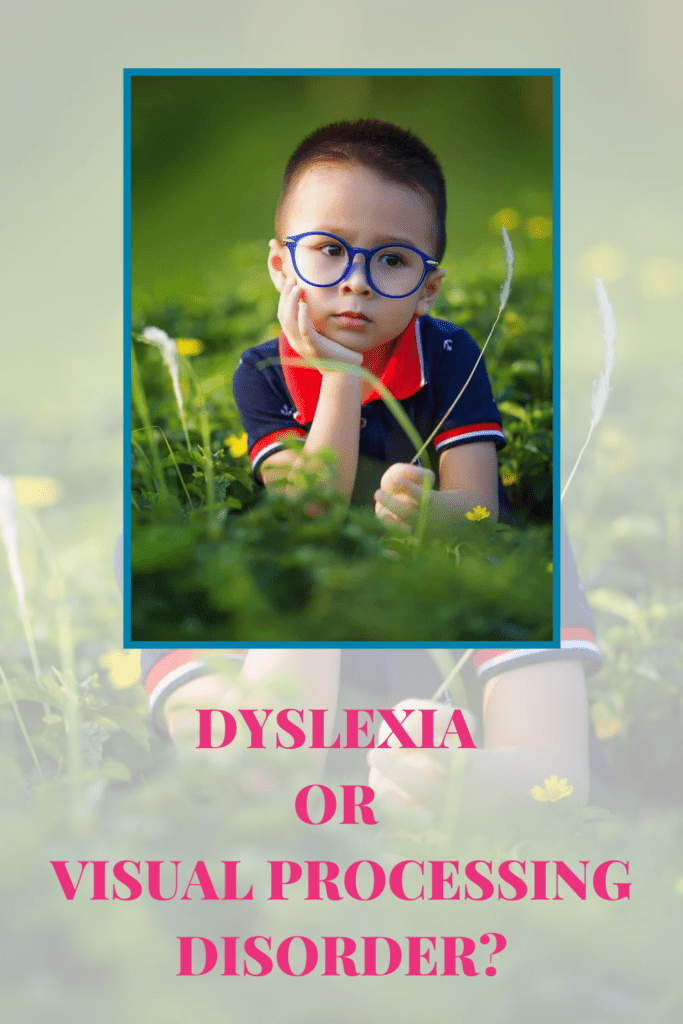Blake is a kid who loves playing ball. He is 9. He was diagnosed with ADHD and a Learning Disability. When Blake was playing with his ball outside, I asked him why he liked playing ball. He said, “I like trying to figure out which one to catch after they hit the wall.”
I said to Blake, “but there is only one ball.”
“Not for me.” He said. “I see two.”
Your Child Can’t Read But It’s Not Dyslexia
When a parent suspects their child has reading difficulties, they assume dyslexia. Many professionals are even under the assumption that the term reading disorder is synonymous with dyslexia. This is not the case.
Dyslexia is the most common learning disability but it is one type of reading disorder.
What Dyslexia Is
Dyslexia means that a person has a hard time reading because they have a phonemic deficit. Phonemes are the smallest sound units of language.
People with dyslexia have a hard time distinguishing sound units and associating or matching specific sounds to letters in order to blend them.
The most common misconception is that dyslexics see letters and words in reverse. While this is true for some – this only represents about 10-15% of the dyslexic population.
Many dyslexics are able to decode, albeit laboriously – but comprehension can be the main area of difficulty. When reading is not automatized due to poor phonological processing, dyslexics rely on their working memory to decode which makes it near impossible to use their working memory in order to comprehend the meaning of the text.
A Different Type of Reading Disorder – Visual Processing Disorder
A child who has strong phonological awareness and processing, but has difficulty decoding and reading to understand may be unable to read fluently for an entirely different reason.
They may have Visual Processing Disorder. This means they have difficulties with how their eyes perceive stimuli or how the vision center in their brain processes visual stimuli.
This has nothing to do with near or far-sightedness or 20/20 vision. These children will often pass an eye- exam. Their eyes can see the stimuli, but the vision center in their brain is not processing it correctly.
Misdiagnosis – How Visual Processing Disorder is Different
Unfortunately, issues with poor visual processing or even Visual Processing Disorder is not well recognized by schools. When it comes to testing for reading ability or reading disorders, this aspect is often overlooked. Visual Processing Disorder is often mistaken for dyslexia and the wrong interventions are used.
Children with these difficulties have trouble with visual memory, visual processing, eye-tracking, eye-teaming as well as visual-motor skills.
These are the children in which it is not only their literacy skills that are affected but poor math and frequently poor penmanship as well as art skills. It is not uncommon for these children to have also have a diagnosis of dysgraphia.
Poor visual processing affects attention and focus. These kids are at risk of being incorrectly labelled with ADHD because their poor visual processing is making their whole world overwhelming and impossible to remain attentive.
Other Common Signs to Watch For
Difficulty with visual processing is sometimes diagnosed as Irlen Syndrome in which reading difficulties arise for the same reasons as poor visual processing: words or letters move, are fuzzy, reverse and there is poor eye-tracking.
These individuals may be sensitive to fluorescent or bright lights, experience headaches and feel dizzy when reading. The white page contrasted with black writing may be too ‘sharp’ which is why coloured overlays can be helpful.
Getting the Right Intervention is Key
Poor Visual Processing can be just as detrimental as dyslexia to a child’s ability to read, but it is often not addressed correctly. An approach geared towards dyslexia is often used instead of strengthening weak connections in the visual center in the brain, improving eye-tracking, eye teaming and having the client do sensory-motor exercises.
While these approaches can be useful – they often do not target the visual system in the same was as an individually tailored reading therapy like Reading Rockstar Bootcamp.
Set up a free 20-minute discovery session to learn more about how you can help your child improve their visual processing so they can become a fluent reader and a more confident kid.
Sources:
Kenneth Lane: Developing Ocular Motor and Visual Perceptual Skills: An Activity Workbook Paperback
Gastone G. Celesia: Disorders of Visual Processing: Handbook of Clinical Neurophysiology Series
Lois Hickman and Rebecca Hutchins: Eyegames: Easy and Fun Visual Exercises: An OT and Optometrist Offer Activities to Enhance Vision
Bidwell, Veronica: The Parent’s Guide to Specific Learning Difficulties: Information, Advice and Practical Tips
Brandes Bonnie: The Symphony of Reflexes: Interventions for Human Development, Austim, ADHD, CP, and Other Neurological Disorders
Melillo, Robert: Disconnected Kids


